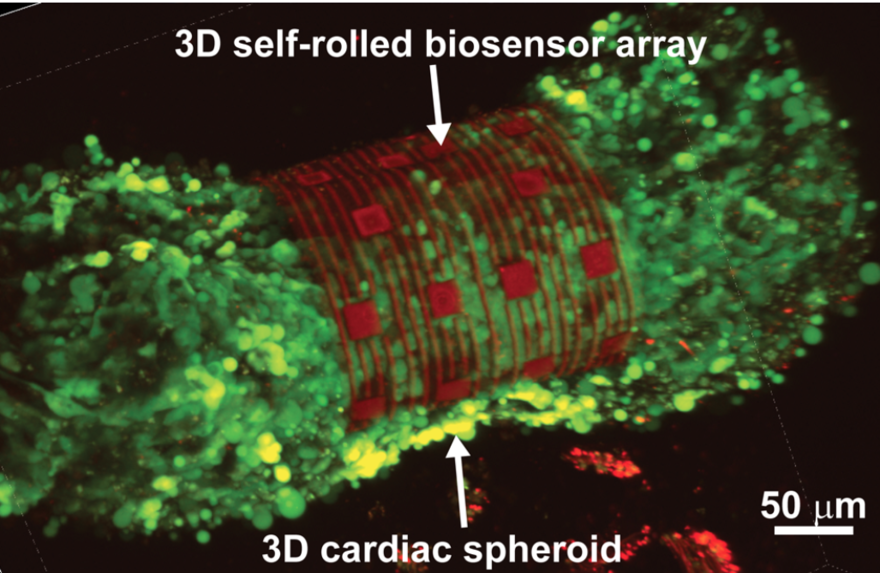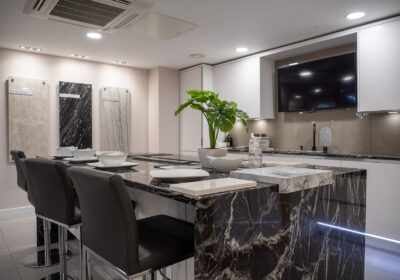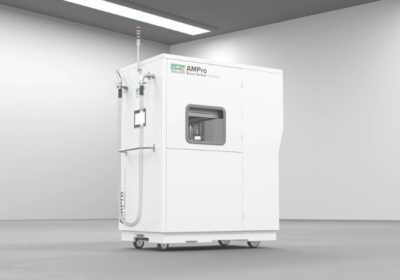For years, scientific research on heart cells was done using cultures on two-dimensional surfaces. Now, researchers from Carnegie Mellon University (CMU) and Nanyang Technological University, Singapore (NTU Singapore) have developed an organ-on-an-electronic-chip platform that uses bioelectrical sensors to measure the electrophysiology of heart cells in three dimensions.
The 3D, self-rolling biosensor arrays are designed to coil up over heart cell spheroid tissues to form an “organ-on-e-chip,” thus enabling the researchers to study how cells communicate with each other in multicell systems such as the heart.
According to the researchers, the organ-on-e-chip approach will help develop and assess the suitability of drugs for treating diseases, as well as gain insight into the link between the heart’s electrical signals and disease. The research, published in Science Advances, will enable researchers to investigate processes in cultured cells that currently are not accessible, such as tissue development and cell maturation.
“For decades, electrophysiology was done using cells and cultures on two-dimensional surfaces, such as culture dishes,” says Tzahi Cohen-Karni, an associate professor of biomedical engineering and materials science and engineering, in a statement. “We are trying to circumvent the challenge of reading the heart’s electrical patterns in 3D by developing a way to shrink-wrap sensors around heart cells and extracting electrophysiological information from this tissue.”
In the organ-on-e-chip, the researchers pin an array of sensors made of either metallic electrodes or graphene sensors to the chip’s surface, then etch off a bottom layer of germanium, which is known as the “sacrificial layer.” After removing this layer, the biosensor array is released from its hold and rolls up from the surface in a barrel-shaped structure.
The researchers tested the platform on cardiac spheroids, or elongated organoids made of heart cells. These 3D heart spheroids are about as wide as two to three human hairs. Coiling the platform over the spheroid allows the researchers to collect electrical signal readings with high precision.
“Essentially, we have created 3D self-rolling biosensor arrays for exploring the electrophysiology of induced pluripotent stem cell derived cardiomyocytes,” says researcher Anna Kalmykov, the lead author of the study and a Ph.D. student in biomedical engineering. “This platform could be used to do research into cardiac tissue regeneration and maturation that potentially can be used to treat damaged tissue after a heart attack, for example, or developing new drugs to treat disease.”
Through collaboration with the labs of Adam Feinberg and Jimmy Hsia, the researchers were able to design a proof of concept and test them on 3D micro-mold formed cardiomyocyte spheroids.
“The whole idea is to take methods that are traditionally done in planar geometry and do them in three dimensions,” says Cohen-Karni. “Our organs are 3D in nature. For many years, electrophysiology was done using just cells cultured on a 2D tissue culture dish. But now, these amazing electrophysiology techniques can be applied to 3D structures.”








